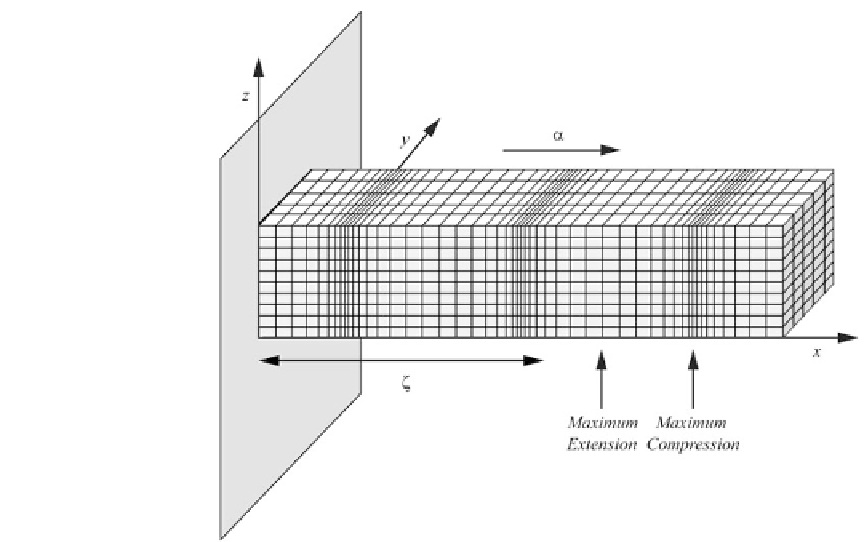Geology Reference
In-Depth Information
Fig. 8.2
Pattern of
deformation associated
with the propagation of
P
waves
propagating in the direction
n
. Similarly, it can be
shown that the function ®
2
(
t
C
—/')representsa
plane wave propagating in the direction
n
.The
waves associated with the propagation of volume
variations, with velocity ' given by (
8.13
), are
called
P waves
and represent the first arrivals to
seismic stations after an earthquake. In the case of
plane waves, the volume variations at any given
distance — from the source occur in the direction
of wave propagation and are alternatively longi-
tudinal shortening or dilatation, as illustrated in
Fig.
8.2
.
We say that the displacement field of
P
-waves
is
longitudinal
. Now we will take the curl of the
homogeneous wave Eq. (
8.11
). This gives:
Dr
u
(8.26)
With this definition, the wave Eq. (
8.25
) can
be rewritten as follows:
@
2
1
“
2
@t
2
D
0
2
r
(8.27)
Again, this is a standard wave equation, with
velocity of propagation given by:
r
¡
“
D
(8.28)
A comparison of (
8.28
) with (
8.13
)showsthat
we always have '>“, because the Lamé pa-
rameters are both positive. The waves associated
with (
8.27
) are called
S waves
(Fig.
8.3
)and
represent a later arrival to seismic stations after an
earthquake (in fact, “
S
” stands for «
Secundae
»,
while “
P
” stands for «
Primae
», from Latin). We
also note the
S
waves cannot propagate in fluid
state matter, because in this case we would have
D
0, so that (
8.28
) implies “
D
0. Therefore,
these waves do not cross the external Earth's core
as well as the oceans.
@t
2
©
ijk
¡
@
2
@
u
k
@x
j
@
2
@x
j
@x
k
D
.œ
C
/
©
ijk
2
©
ijk
@
u
k
@x
j
2
©
ijk
@
u
k
@x
j
C
r
D
r
(8.25)
where ©
ijk
is the Levi-Civita tensor (see
a new vector field, the curl of the displacement
field:




